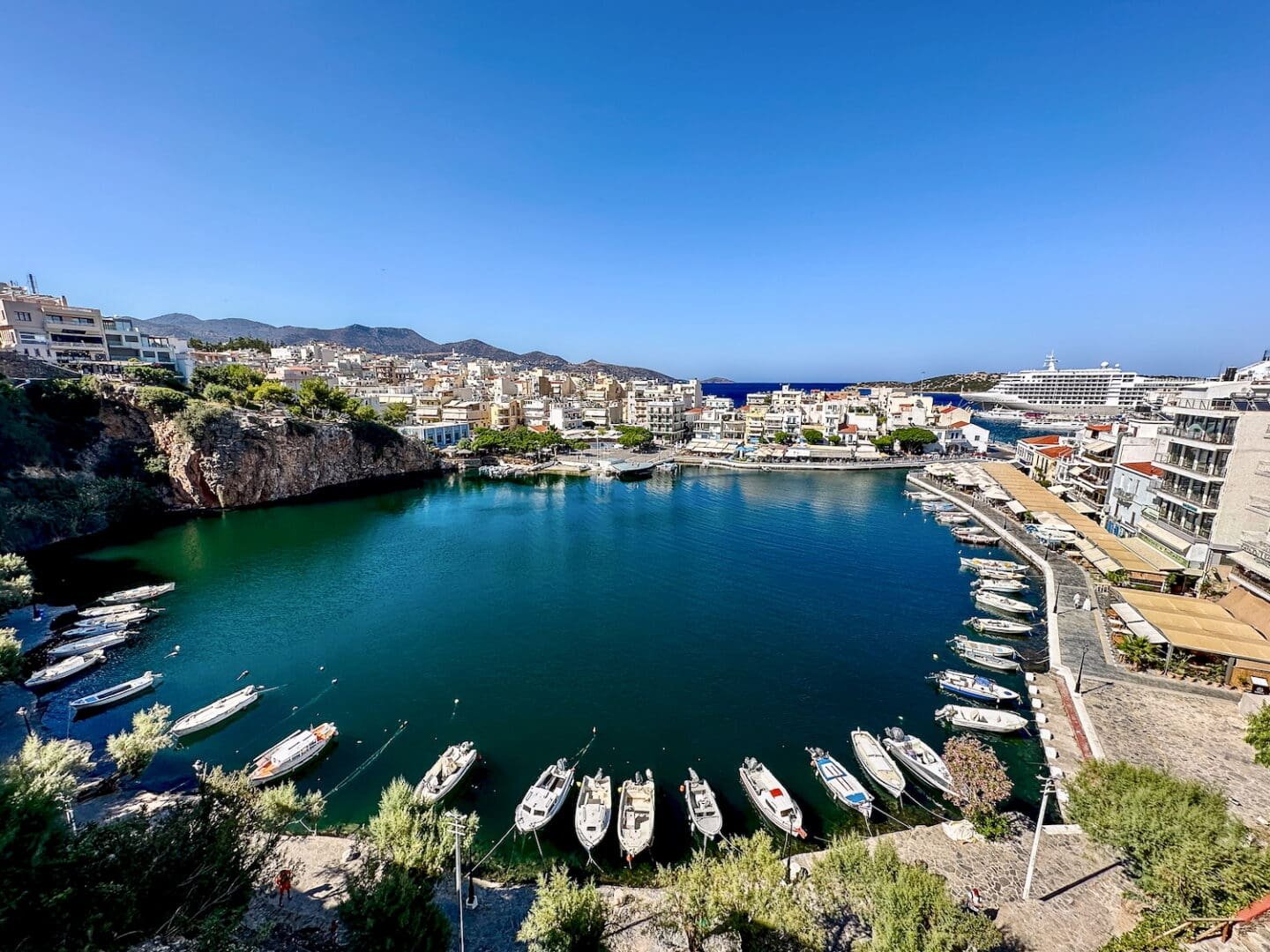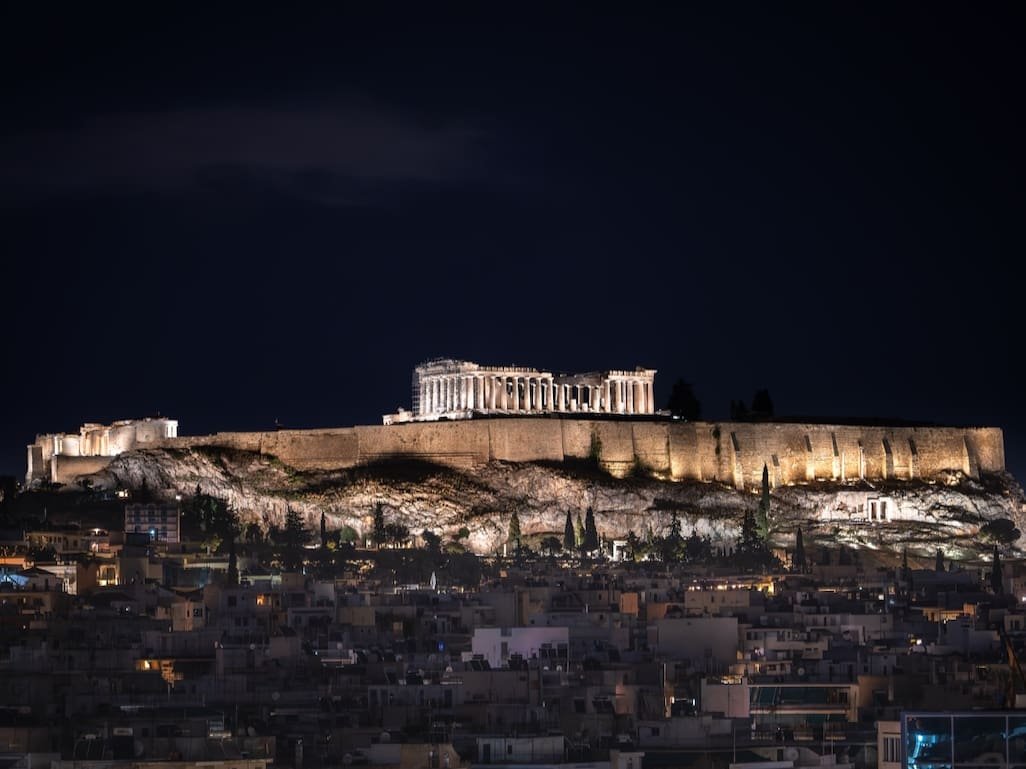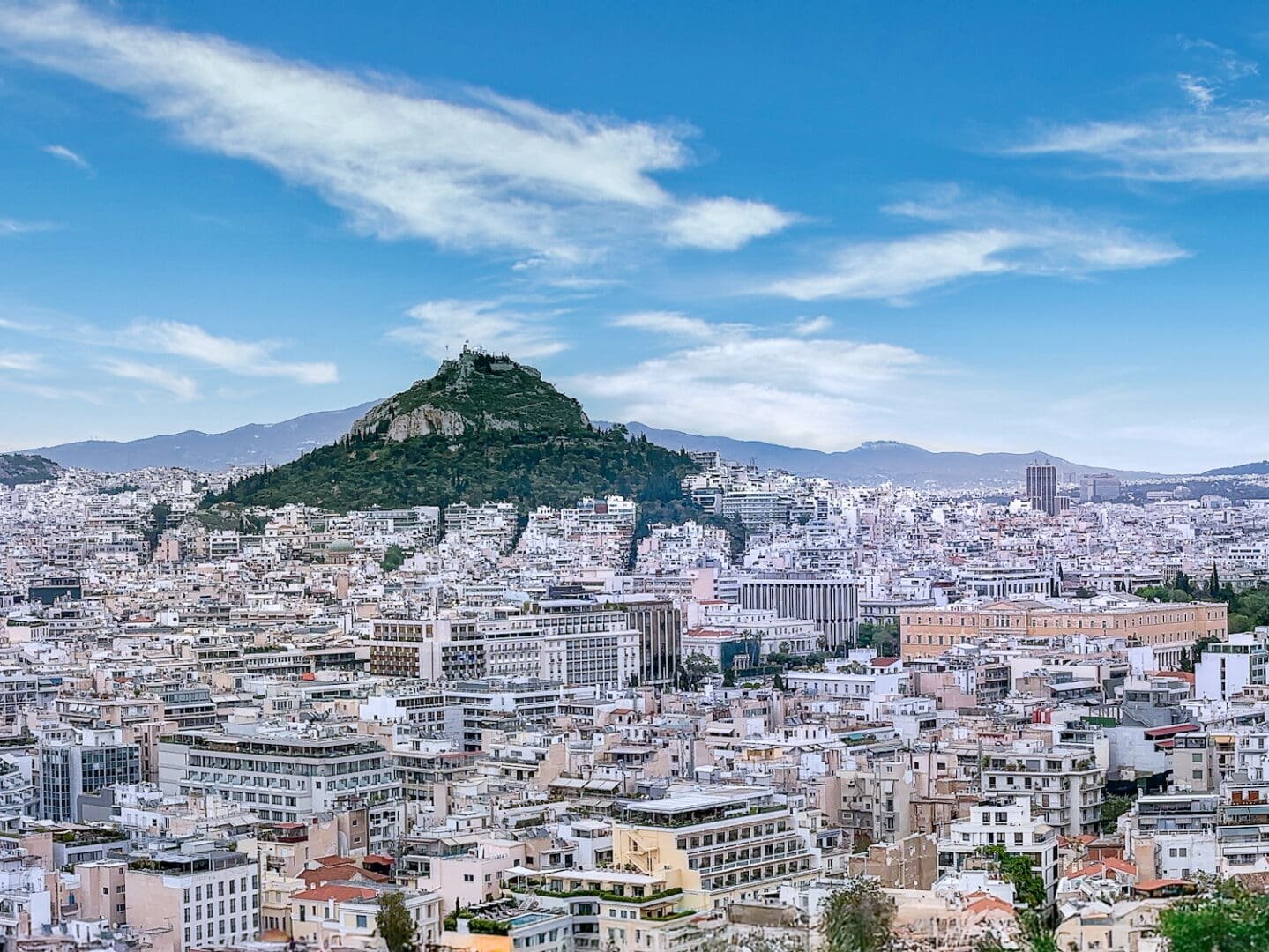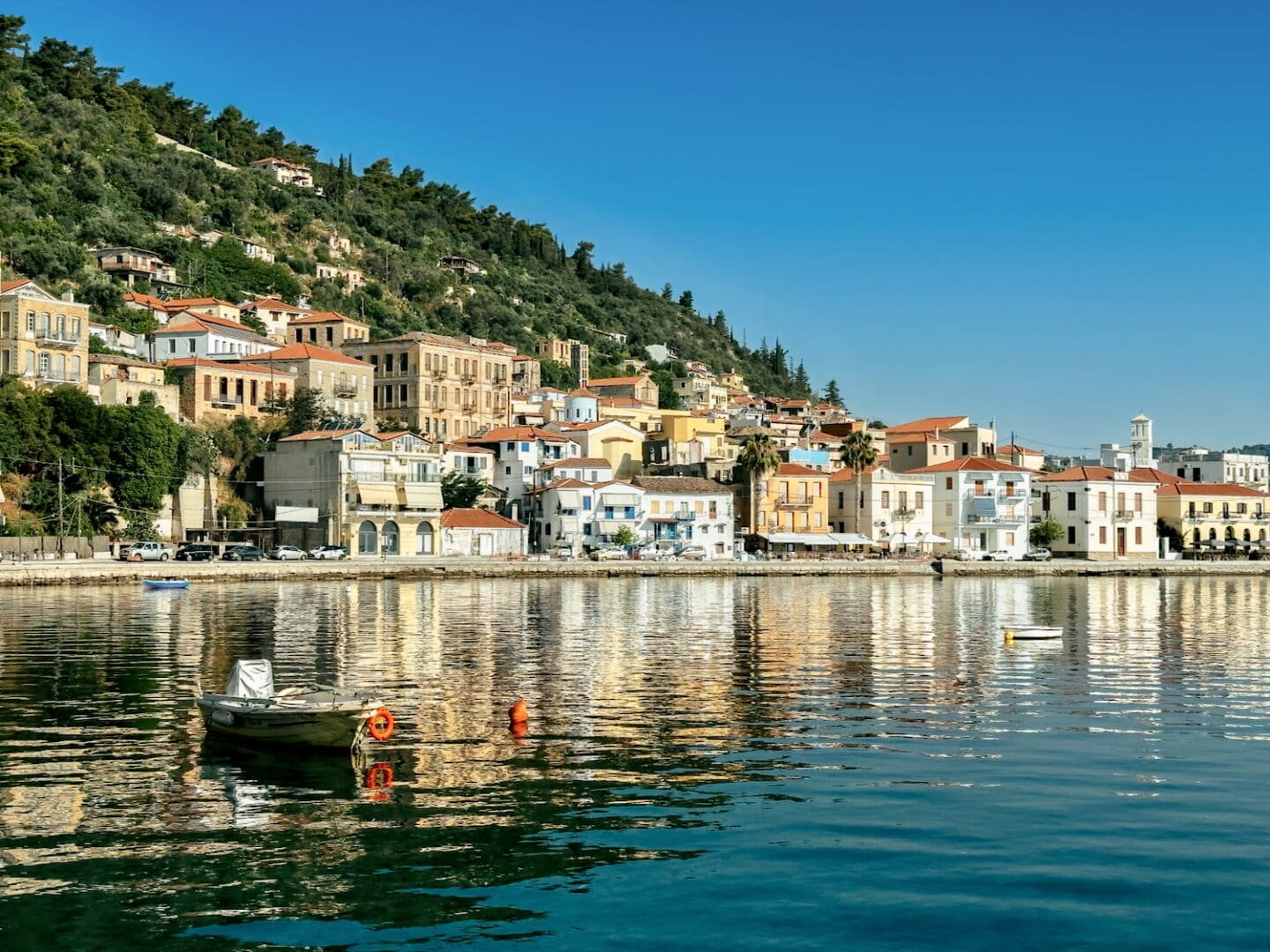
On the Greek island of Crete, Gournia is an ancient Minoan town, seemingly forgotten by time and travelers.
Let’s discover this beautiful Bronze Age archaeological site just off the beaten path. We’ll also meet its trail-blazing archaeologist at the turn of the 19th century.
Along the way, you’ll find custom maps and travel tips to visit Gournia, Crete.
You’ll also find recommendations from our firsthand perspective over years of slow travel, including hands-on archaeological field work in Greece.
Ready? Πάμε, let’s go!
Gournia, Crete: Explore an Ancient Minoan Town (Video)
Gournia, Crete, presently remains a rather hidden gem. This, despite Gournia’s pristine ancient ruins and easy access from Heraklion, the capital city of Crete, as well as other popular places such as Sitia, Ierapetra, and Agios Nikolaos.
Surprisingly, or so it may presently seem, Gournia stands apart from other famous Greek landmarks in mainland Greece and the Greek Islands.
Gournia is also separate from the six Minoan Palatial Centres inscribed in July 2025 as UNESCO World Heritage Sites.
The six Minoan Palatial Centers include the archaeological site of Knossos, the top tourist attraction on Crete, coupled with the Minoan palace complexes of Phaistos, Malia, Zakros, Zominthos, and Kydonia.
However, given that Gournia possesses both natural beauty and compelling history, we found Gournia well worth the wander off the beaten track.
When you book or purchase through some links, Spotlight Sojourns may earn a small commission at no extra cost to you. Thanks for using our affiliate links!
Gournia, Crete Map
Gournia, Coastal Town of Minoan Crete
Located on the north coast of Crete, Gournia (Γουρνιών) affords picturesque coastal views overlooking the Gulf of Mirabello and Mirabello Bay.
Gournia’s ancient ruins sprawl across gentle hills and a verdant valley, pastoral and peaceful. Olive groves, vineyards, and mountains flank the prehistoric Bronze Age site.
The American archaeologist Harriett Boyd Hawes, who excavated Kavousi and Gournia, describes the origin of its name:
“This valley is called Gourniá, because its formation is thought to resemble the trough (gorni) from which barnyard animals drink. The name occurs elsewhere in Crete for similar situations; in fact, it is almost equivalent to our topographical use of the word ‘basin.’” (Crete: The Forerunner of Greece)
Excavated in almost complete entirety in the early 20th century, Gournia presents an impressive example of a sophisticated, thriving Minoan urban center.
In their insightful and delightful book Crete: The Forerunner of Greece, authors Harriet Boyd Hawes and Charles Henry Hawes blend their original scholarly knowledge with an enjoyable travel narrative.
Sir Arthur Evans, the British archaeologist of Knossos fame, wrote the preface to the 1909 first edition of Crete: Forerunner of Greece.
Sir Arthur assures, “the reader may safely trust himself to obtain an illuminating glimpse of this old Minoan world in its various aspects.”
Archaeologists and scholars generally date the Minoan Crete over 5,000 years ago, give or take a century or two.
The Hawes’ Chronological Table places Gournia following “the opening of the Bronze Age” at Knossos circa 2800 to 2600 BC.
Next, the Hawes date the construction and habitation of Gournia circa 2400 BC during the Early Minoan Period III.
Gournia continued its urban status until approximately 1200 BC, i.e., the “transition to Iron, the Homeric Age.”
Gournia, Crete Discoveries

Well-preserved stone streets, stairs, and terraces link the various levels of ancient Gournia, leading up the small Minoan palatial center and central court on a ridge, a rather low acropolis.
Gournia 20th Century Excavations
The original excavations from 1901 to 1904 revealed the well-built stone foundations of this small palace, as the palatial centers are perhaps more familiarly known. A Minoan palace or palatial center is, of course, a hallmark of Minoan civilization.
Ruins of public squares, workshops, and more than 60 houses unveiled everyday life in a Minoan town.
Additionally, there’s a large standing stone affixed in a certain intersection.
This mysterious stone may or may not have been a baetyl, a sacred stone such as the Omphalos in Delphi, Greece.

The upright ancient stone still stands in situ, and a helpful modern placard adds context.
Whether or not this stone in particular is a baetyl of sacred mythology, its size and position indicate an antique importance in reality.
Later excavations during the 20th century uncovered a cemetery, house tombs, ashlar walls, more foundations, and more artifacts.
Gournia 21st Century Excavations
The year 2010 introduced a new archaeological era at Gournia. Professor and archaeologist L. Vance Watrous, PhD, with the University of Buffalo, New York, undertook the Gournia Excavation Project.
Director Watrous and his excavation teams not only have expanded the area of Minoan Gournia but also have enriched our understanding of life in Minoan Crete.
If you’d like to learn more, then we highly recommend reading “The Minoans of Crete” by Jarrett Lobell in Archaeology Magazine, featuring this important 21st-century work.
Gournia Minoan Antiquities
Just as the Gournia excavations reveal a Bronze Age city from rise to decline, the Gournia antiquities similarly encompass the Early Minoan, Middle Minoan, and Late Minoan Periods.
The significant inventory from Gournia includes pottery, stone vases, gold jewelry, bronze tools, and the Kantharos, a rare cup or vessel crafted of silver.
Today, the Archaeological Museum of Heraklion, Crete, holds the foremost collection of Minoan art, artifacts, and antiquities in the world.
The precious Silver Kantharos of Gournia is but one of the priceless Minoan masterpieces on exhibition there.
Address: Archaeological Museum of Heraklion (Αρχαιολογικό Μουσείο Ηρακλείου) | Xanthoudidou and Hatzidaki Street 1 | 71202 Heraklion, Crete, Greece
Harriet Boyd Hawes, Trail-Blazing Archaeologist
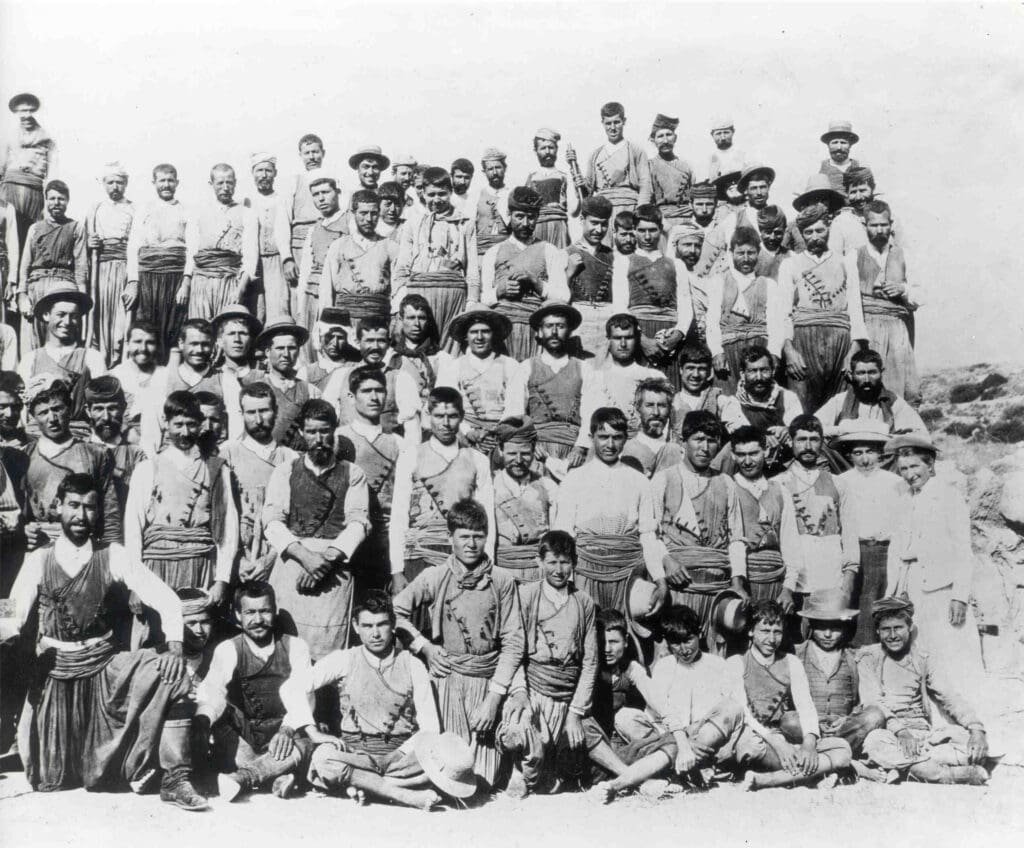
During a legendary life spanning the 19th and 20th centuries, Harriet Ann Boyd Hawes (1871-1945) boldly blazed trails and passionately pursued life on her own terms.
Harriet Boyd Hawes, a Historic Life
In 1892, Boston-born Harriet launched her academic and archaeological career with a Bachelor of Arts degree in Classics from Smith College, Massachusetts.
Smith College continued to play a vital role following her undergraduate degree. Harriet received her Master of Arts in 1901 here, as well as an honorary Doctorate in 1910.
Now the Smith College Archives holds the Harriet Boyd Hawes Papers.
Furthermore, Harriet was a Fellow of the American School of Classical Studies in Athens, Greece, and of Bryn Mawr College, Pennsylvania.
In 1900, Harriet excavated Kavousi, Crete. Then in 1901, she discovered Gournia and subsequently received the history-making appointment as Director of Excavations.
In this ground-breaking role, the young American woman directed teams of up to 100 workers to excavate Gournia through 1904.
As shown above in the photo from 1904, Harriet stands in the second row, second from the right.
Harriet thus became the first American archaeologist, and the first woman of any nationality, to lead major excavations in Greece.
She made history once again as the first woman to speak at the prestigious Archaeological Institute of America.
Harriet Boyd Hawes, a Meaningful Legacy
Besides her milestone achievements in academia and archaeology, Harriet led a full and fascinating life.
In 1906, Miss Harriet Ann Boyd married Mr. Charles Henry Hawes; the couple met while working in Crete. In fact, her future husband stands to her right in the above photo. Harriet and Charles soon had two children, Alexander and Mary.
She wrote abundant correspondence, scholarly publications, and general interest books, for example, Crete: Forerunner of Greece and her personal Memoirs of a Pioneer Excavator in Crete.
She nursed on the front lines and also directed relief campaigns in three wars. Queen Olga of Greece later bestowed the Red Cross Medal to honor Harriet’s wartime work.
And so, trail-blazing archaeologist Harriet Boyd Hawes made indelible contributions both to ancient Greece and the modern Greek nation. Above all, she left a powerful legacy for future generations.
Travel Tips to Visit Gournia, Crete

Getting to Gournia Archaeological Site
Discreetly shaded by olive groves, the archaeological site of Gournia is located in Northeast Crete, just off the busy coastal highway EO 75.
The best way to visit Gournia is by rental car or private tour. Although Gournia is a major Minoan site and quite easy to reach by car, public transport and group tours are limited, unlike when visiting Knossos.
Let’s use the three airports in Crete as a standard point of reference. The following are approximate driving distances between these primary transportation hubs and Gournia:
- Sitia Airport to Gournia is a driving distance of about 30 miles (48.7 km).
- Heraklion International Airport to Gournia is a driving distance of 47 miles (75.8 km).
- Chania International Airport to Gournia is a driving distance of 138.5 miles (223 km).
In addition, Gournia is closely located to other towns popular with tourists, for instance:
- Ierapetra to Gournia is a driving distance of 10.5 miles (17 km).
- Agios Nikolaos to Gournia is a driving distance of 11 miles (18 km).
Address: Archaeological Site of Gournia (Αρχαιολογικός Χώρος Γουρνιών) | 7220 Pachia Ammos, Crete, Greece
Alternatively, you can book a private tour and leave the driving in expert hands.
A private car with a professional driver is a wonderful way to visit Gournia, the Heraklion Archaeological Museum, and other places in Crete whenever and wherever you wish.
Visiting Gournia Archaeological Site

The archaeological site of Gournia operates year-round. However, the site is closed every Tuesday, as well as on national and religious holidays.
The site generally opens at 8:30 am and closes at 3:30 pm. Weather permitting, of course, and staff permitting, because this is a small site.
The best things to bring are layered clothing, a hat, sunglasses, sunscreen, and bottled water.
We’ve visited Gournia twice in spring, the shoulder season of Greece, when winds can arise and temperatures can fall surprisingly.
If you’re planning a trip to Greece in the peak summer season, the bright sun and heat can be intense. In this case, the best time to visit Gournia is early morning, the coolest time of day.
Oh yes, and please do wear sturdy shoes.
There is an accessible wheelchair lift at the entrance. However, the terrain thereafter is essentially unpaved and uneven through the archaeological site.
You’ll walk up and down grassy slopes, around prehistoric foundations, and across ancient cobblestones worn smooth over thousands of years.
So, plan to take your time and visit Gournia slowly, thoughtfully, and thoroughly.
Look for traces of Minoan culture among these ancient ruins. Listen for echoes of Minoan voices on the Mediterranean breeze.
Discover a sense of quiet wonder when discovering this Bronze Age gem, seemingly forgotten by time and travelers.
Come explore, experience, and be inspired by Gournia, Crete.
•••
Interactive Gournia, Crete Map
Gournia, Crete Sources and Resources
Allsebrook, Mary Hawes. Born to Rebel: The Life of Harriet Boyd Hawes. Oxbow Books, 2002.
Note: Mary Allsebrook is the daughter of Harriet Boyd Hawes and Charles Hawes. It’s out of print at this time. If you come across the book in a library, used bookstore, or elsewhere, then we highly recommend reading it.
Boyd Hawes, Harriet, et al. Gournia, Vasiliki, and Other Prehistoric Sites on the Isthmus of Hierapetra, Crete: Excavations of the Wells-Houston-Cramp Expeditions 1901, 1903, 1904. Second edition, Institute for Aegean Prehistory Academic Press, 2015.
Buell, D. Matthew and John C. McEnroe. Architecture and Memory at Gournia: Past and Memory in the Aegean Bronze Age. Proceedings of the 17th International Aegean Conference, University of Udine, Department of Humanities and Cultural Heritage, Ca’ Foscari University of Venice, Department of Humanities, April 17th to 21st, 2018. Edited by Elisabetta Borgna, et al. Peeters Publishers, 2019.
Cohen, Getzel M. and Martha Sharp Joukousky, editors. Breaking Ground: Pioneering Women Archaeologists. University of Michigan Press, 2010.
Gournia Excavation Project, gournia.org.
Hawes, Charles Henry and Harriet Boyd Hawes. Crete: The Forerunner of Greece. Fourth edition, London and New York, Harper & Brothers, 1922.
“Harriet Boyd Hawes and workmen at Gournia, Crete, 1904.” Credit to The University Museum, University of Pennsylvania. Photo. Accessed July 27, 2025.
Lobell, Jarrett A. “The Minoans of Crete.” Archaeology Magazine, May June 2015.
Check Out More Recommendations
GET: Now that you’re ready to visit Gournia, Crete, get your exclusive free storytelling guide to tell your travel stories easily.
•••
Gournia, Crete FAQs
Where is Gournia, Crete?
The archaeological site of Gournia is located on the north coast of Crete. The ancient ruins of this Minoan city overlook the Gulf of Mirabello and Mirabello Bay.
How do you get to Gournia from Heraklion or Agios Nikolaos?
Gournia is best reached by rental car or private tour, due to limited public transportation. It’s located just off the modern coastal highway EO75. The driving distance is about 47 miles (75.8 km) from Heraklion International Airport and roughly 11 miles (18 km) from Agios Nikolaos.
What can you see at the Gournia archaeological site today?
You can see ancient ruins of an entire Minoan town at Gournia. Foundations of over 60 houses, some with house tombs, workshops, a cemetery, and public spaces sprawl up and down gentle hills and a lush valley. Gournia is a unique archaeological site of natural beauty, Minoan civilization, and at this time, surprisingly few visitors. What you won’t see are colorful reconstructions and large crowds compared to Knossos.
Is Gournia worth visiting?
Gournia is worth visiting, because the ruins reveal everyday life in a Minoan town. Ancient stone streets, walls, and foundations of workshops and over 60 houses lead to a central court or public square, and small palatial center or Minoan palace. The historic site is peaceful and beautiful.

All opinions expressed are Spotlight Sojourns’ own.
All content and images are original, created with care by yours truly, Marilee Kostadimas and Paul Kostadimas. We’re the Hidden Gemologists® of Spotlight Sojourns: Award-winning travel experts and slow travel storytellers. Because slow travel is meaningful travel, part of a meaningful life. And stories enrich the meaning.

